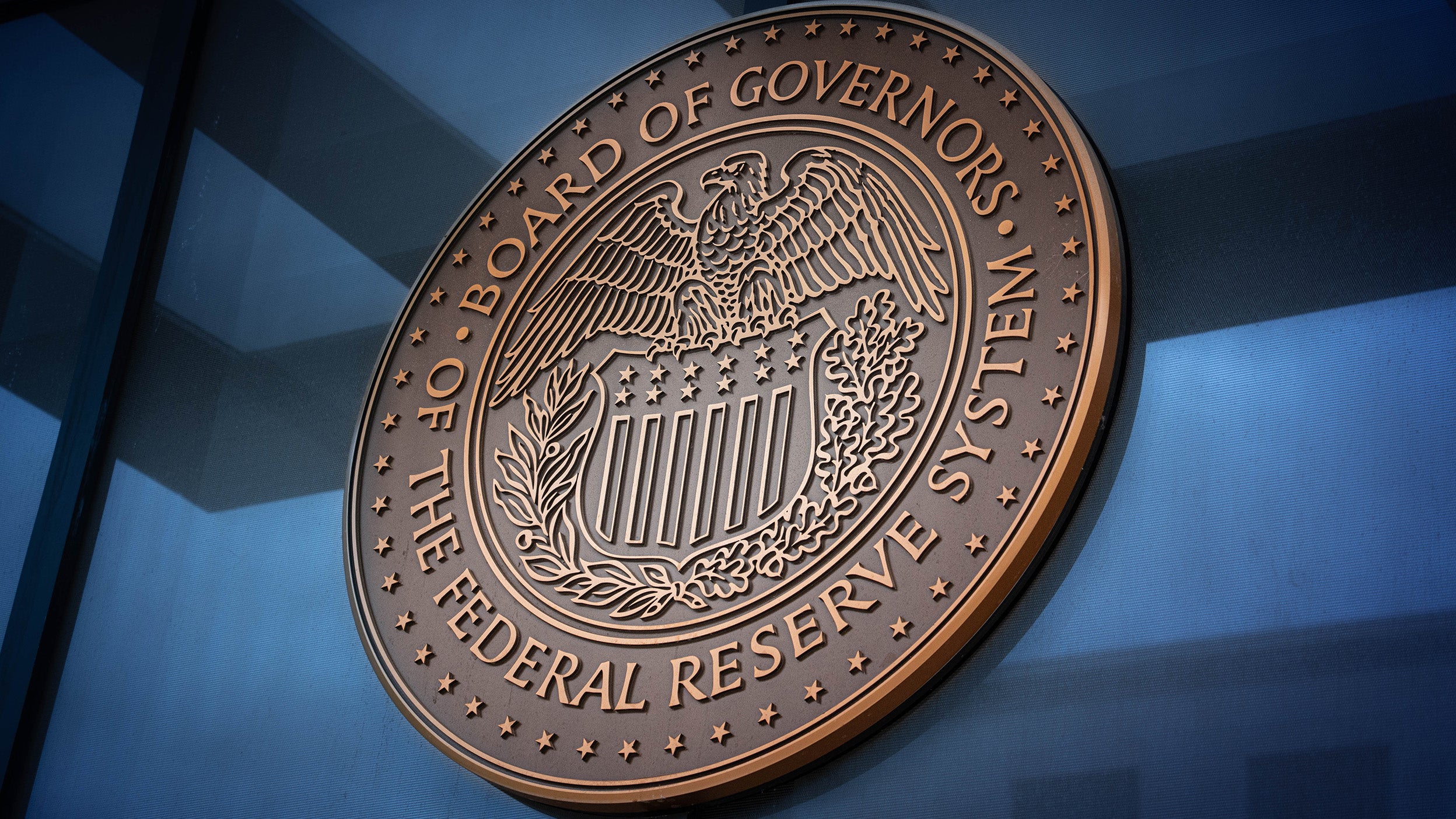
Markets and Economy Above the Noise: Rethinking 2025 narratives
In 2025, clear storylines on the Federal Reserve, AI stocks, and rates captivated us. But the numbers don’t always match the narratives.

Hawkish headlines last week were quickly overshadowed by the Federal Reserve (Fed) Chair’s dovish speech at Jackson Hole.
Powell’s remarks helped reverse a decline in tech stocks that was prompted by questions about AI and geopolitics.
The dovish tone put the US dollar on the back foot, and we expect the trend for it will continue to be lower.
Normally one would like to think of August as being a quieter month, people are away on holiday, the email traffic slows, it’s a good time to catch up on some reading. But this summer there hasn’t been much time to rest. Last week was no exception. Incoming data pointed to more resilient global growth,1 and gave some Fed members reason to strike a more hawkish tone in their comments during the week. But Fed Chair Jerome Powell, speaking at the Jackson Hole Economic Symposium, was the highlight of the week. He indicated a rate cut could be coming in September as “the shifting balance of risks may warrant adjusting (the) policy stance.” And of course, no week in 2025 is complete without a new attack on the Fed from the US administration.
US technology stocks sold off early in the week2 as academics questioned whether artificial intelligence (AI) is doing anything to boost productivity3 and as China directed companies not to use NVIDIA’s H20 chip. However, they rallied on Friday4 following Powell’s comments from Jackson Hole.
Powell’s signal that a rate cut in September is increasingly likely marked a potential shift in the Fed’s policy stance. After a period of relatively restrictive monetary policy, it now sees the balance of risks, particularly signs of a softening labor market, as warranting a more accommodative approach.
While inflation remains a concern, some policymakers appear willing to look past recent tariff-driven price pressures, viewing them as transitory rather than indicative of a broader inflationary trend. This perspective is echoed in the bond market, where inflation breakeven across the 1-, 3-, and 5-year horizons have remained well-anchored.5 In effect, the Fed is aligning with market expectations for easing, a development we view as constructive for risk assets. In this environment, we would be reluctant to fight the Fed.
But the US administration is continuing to fight the Fed. This time it called on Fed Governor Lisa Cook to resign, and Powell to fire her — which he doesn’t have the power to do — over an allegation of mortgage fraud. Cook struck back saying she’ll not be pressured into resigning from her position. This is another clear signal that the US administration is seeking to reshape the Fed and push policy rates lower.
Ironically, the minutes from the July Federal Open Market Committee (FOMC) meeting, released last week, were relatively hawkish and suggested most members thought inflation was a bigger problem than growth. Those minutes of course reflected data before the recent labor market data were revised lower.6 And on a Bloomberg podcast7 last week, Kansas City Fed President Jeffery Schmid stated, “I don’t think we should not talk about would there be a scenario where rates could go higher on the policy side.”
Nonetheless, Powell’s tone at Jackson Hole marked a departure from the more hawkish messaging in the FOMC minutes. We take his comments seriously, as they suggest a shift in the Fed’s thinking. While internal debate and even dissent may emerge in upcoming meetings, the direction of travel appears clear. In our view, his next move is likely toward easier policy.
Purchasing Managers’ Index (PMI) data last week pointed to a resilient growth backdrop where activity is expected to improve over the coming months.8 The improvement was broad-based across the US, Europe, and parts of Asia, and showed better employment and pricing expectations among the businesses surveyed. This is typically good news for growth, and potentially stocks, but calls into question when and by how much the Fed will cut its policy rate.
While the global macro data was positive, the tech sector dragged stocks lower ahead of the Fed meeting at Jackson Hole.9 There was no specific piece of news that catalyzed the start of that move. One would have assumed most would be looking forward to NVIDIA’s earnings results next week. It seemed to be the culmination of several pieces of news. First, a recent article10 was widely cited across newswires suggesting that the productivity gains from AI are not being seen by many firms. It called into question whether these firms will be able to monetize their capex spending.
The geopolitical challenges around leading-edge tech then returned as NVIDIA ordered the suspension of H20 chip production after Chinese authorities moved to restrict the sales of these China-specific processors.
But these concerns were swiftly relegated at the end of the week as the expectation of lower policy rates helped growth areas of the market rally strongly.11
In the week ahead, NVIDIA will report earnings. This is now as much a macro as a micro story. In fact, it may be seen as a geopolitical story, too. Given the capex numbers and projections from the hyperscalers, one could assume the reported numbers will be strong. Comments from NVIDIA President and CEO Jensen Huang should be watched closely however for any sign that his customers will spend less.
The US dollar gained some support early last week from the more hawkish tone surrounding monetary policy,12 but Powell‘s dovish remarks at the end of the week put the dollar on the back foot. We remain of the view that the trend in the dollar is lower. We believe it remains overvalued13 and US interest rate differentials appear poised to diverge with the rest of the world. The attacks on the Fed lend support to further dollar weakness, in our view.
Dollar weakness, improving global growth, and supportive US policy may, in our view, unlock opportunities in areas of the market that have lagged recently, including non-US and smaller-cap US stocks.
Date |
Country |
Economic release or event |
Importance |
|---|---|---|---|
Aug. 29 |
US |
Personal income and spending |
Vital for assessing consumer strength and inflation pressures |
|
US |
Core Personal Consumption Expenditures Deflator |
Fed’s preferred inflation gauge; critical for rate policy decisions |
|
US |
Chicago Purchasing Managers’ Index
|
Regional business conditions; often a leading indicator for ISM manufacturing |
|
US |
University of Michigan Consumer Sentiment Index
|
Measures consumer confidence and inflation expectations |
|
Canada |
Gross domestic product (GDP) |
Key indicator of Canadian economic performance; impacts Bank of Canada policy stance.
|
|
UK |
Nationwide house prices |
Insight into UK housing market trends and consumer wealth
|

In 2025, clear storylines on the Federal Reserve, AI stocks, and rates captivated us. But the numbers don’t always match the narratives.

For investors looking to diversify their mega-cap technology exposure, improving growth and falling interest rates may be good reasons.

A rate cut, which markets are pricing in despite Fed member differences, and an expected improving economy in 2026, could support stocks.
Important information
NA4766540
Image: pabradyphoto / iStock
All investing involves risk, including the risk of loss.
Past performance does not guarantee future results.
Investments cannot be made directly in an index.
This does not constitute a recommendation of any investment strategy or product for a particular investor. Investors should consult a financial professional before making any investment decisions.
Capital expenditures (or capex) is the use of company funds to acquire or upgrade physical assets such as property, industrial buildings, or equipment.
The University of Michigan Consumer Sentiment Index is published monthly, based on a telephone survey designed to assess US consumer expectations for the economy and their personal spending.
Dovish refers to an economic outlook that generally supports low interest rates as a means of encouraging growth within the economy.
The federal funds rate is the rate at which banks lend balances to each other overnight.
The Federal Open Market Committee (FOMC) is a committee of the Federal Reserve Board that meets regularly to set monetary policy, including the interest rates that are charged to banks.
Gross domestic product (GDP) is a broad indicator of a region’s economic activity, measuring the monetary value of all the finished goods and services produced in that region over a specified period of time.
Hawkish describes a central bank or policymaker's preference for a tighter monetary policy, typically to combat inflation.
Hyperscalers are large cloud service providers, which can provide services such as computing and storage at enterprise scale.
Breakeven inflation is the difference in yield between a nominal Treasury security and a Treasury Inflation-Protected Security of the same maturity.
An interest rate differential (IRD) measures the gap in interest rates between two similar interest-bearing assets.
Leverage measures a company’s total debt relative to the company’s book value.
Monetary easing refers to the lowering of interest rates and deposit ratios by central banks.
The Nasdaq Composite Index is the market-capitalization-weighted index of approximately 3,000 common equities listed on the Nasdaq stock exchange.
Personal consumption expenditures (PCE), or the PCE Index, measures price changes in consumer goods and services. Expenditures included in the index are actual US household expenditures. Core PCE excludes food and energy prices.
A policy rate is the rate used by central banks to implement or signal their monetary policy stance.
The Producer Price Index (PPI) program measures the average change over time in the selling prices received by domestic producers for their output. The prices included in the PPI are from the first commercial transaction for many products and some services.
Purchasing Managers’ Indexes (PMI) are based on monthly surveys of companies worldwide and gauge business conditions within the manufacturing and services sectors.
A risk asset is generally described as any financial security or instrument that carries risk and is likely to fluctuate in price.
Standard deviation measures a portfolio’s or index’s range of total returns in comparison to the mean.
The US Dollar Index measures the value of the US dollar relative to the majority of its most significant trading partners.
In general, stock values fluctuate, sometimes widely, in response to activities specific to the company as well as general market, economic and political conditions.
Many products and services offered in technology-related industries are subject to rapid obsolescence, which may lower the value of the issuers.
The risks of investing in securities of foreign issuers, including emerging market issuers, can include fluctuations in foreign currencies, political and economic instability, and foreign taxation issues.
The opinions referenced above are those of the author as of Aug. 22, 2025. These comments should not be construed as recommendations, but as an illustration of broader themes. Forward-looking statements are not guarantees of future results. They involve risks, uncertainties and assumptions; there can be no assurance that actual results will not differ materially from expectations.
This link takes you to a site not affiliated with Invesco. The site is for informational purposes only. Invesco does not guarantee nor take any responsibility for any of the content.